iCaur 03 vs. BYD Atto 3, how will iCaur 03 challenge the globally best-selling Atto 3?
 Kevin WongOct 16, 2025, 02:49 PM
Kevin WongOct 16, 2025, 02:49 PM
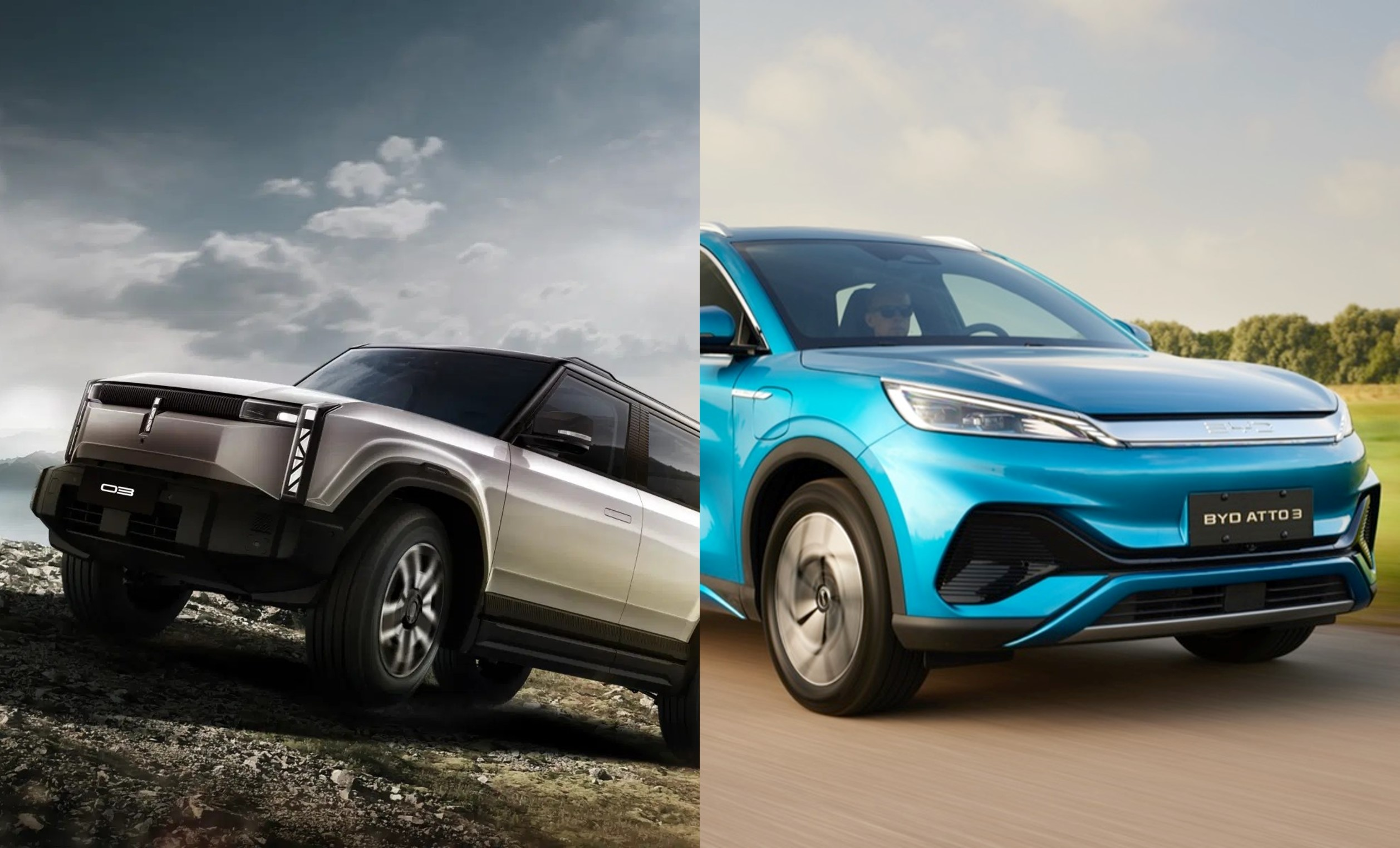
[PCauto] The Atto 3 is arguably BYD's best-selling model globally. As of June 2025, its cumulative global sales have exceeded 1 million units. This milestone was achieved in less than three and a half years (since its launch in China in February 2022), making it one of the fastest BYD models to reach 1 million in global sales.
Since the start of 2025, the Atto 3 has maintained steady growth. From January to August, its cumulative global sales reached 370,000 units, selling an average of approximately 46,000 units per month.
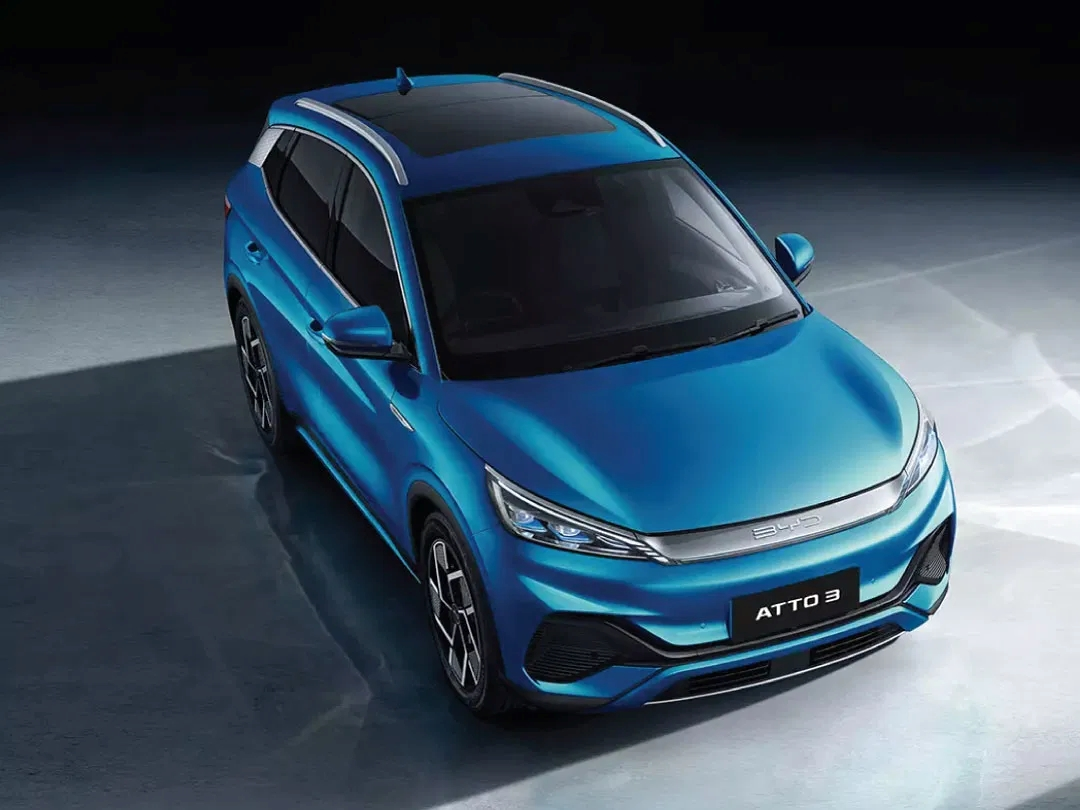
However, for BYD, a model as important as the Atto 3 now faces a formidable competitor. This newcomer boasts an impressive exterior design and also hails from a Chinese automaker.
iCaur 03 Debuts, Targeting the Market with Superior Value
The iCaur 03 was launched in Malaysia on September 9 this year. Although it entered the market later than the Atto 3, it stands out with its striking exterior design.
The iCaur 03 adopts the popular "boxy" rugged SUV design language, and its overall silhouette echoes classic models like the Land Rover Defender. However, as a C-segment vehicle, the iCaur 3 features a more compact size, similar to the Atto 3.
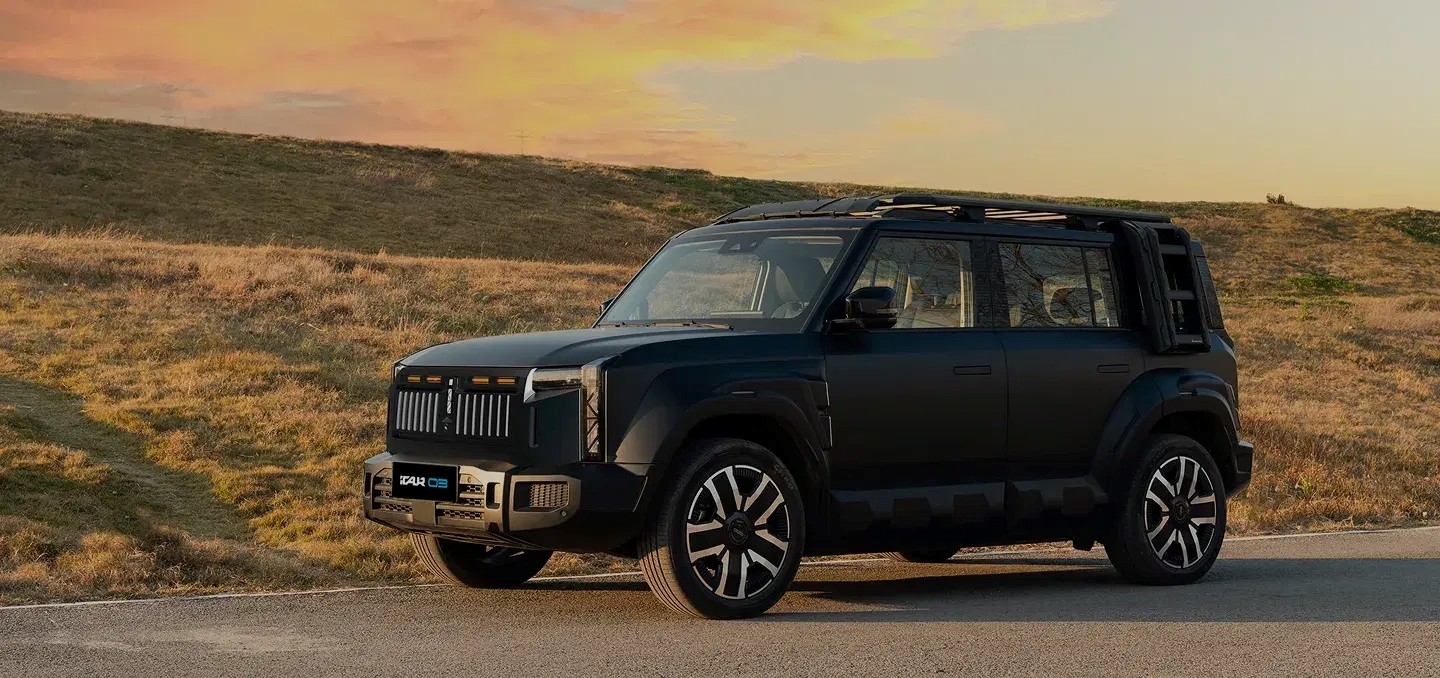
Moreover, the iCaur 03 is cheaper than the Atto 3 Ultra (RM123,800). The 2WD version of the iCaur 03 is priced at RM119,800.
Additionally, the all-wheel-drive iCaur 03 iWD is priced at RM129,800. Although this model is slightly more expensive than the Atto 3 Ultra, it offers all-wheel drive, enabling it to handle light off-road conditions.
iCaur 03's Striking Exterior Design
The exterior of the iCaur 03 holds strong appeal for young consumers, with its unique style that blends a rugged feel with sci-fi elements.
At the front, the vertically arranged split headlamps and the thick black grille trim create a "space fortress" visual effect, which, combined with the robust bumper design, accentuates a mecha-inspired style.
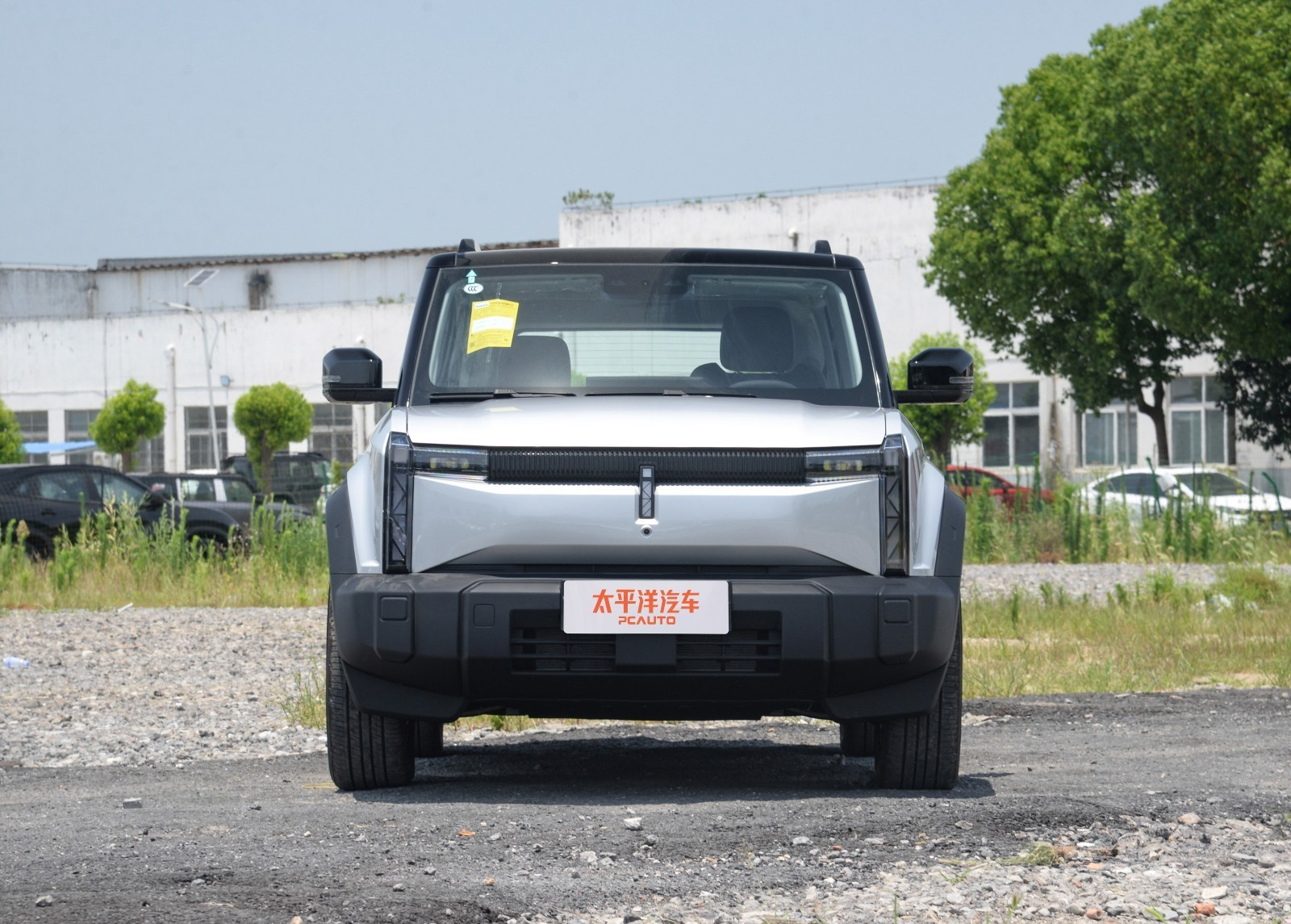
Its nearly vertical A/B/C pillars on the sides, wide fender flares, and the optional floating roof design further enhance the sense of strength. The distinctive square-shaped charging port cover on the C-pillar adds to its recognizability.
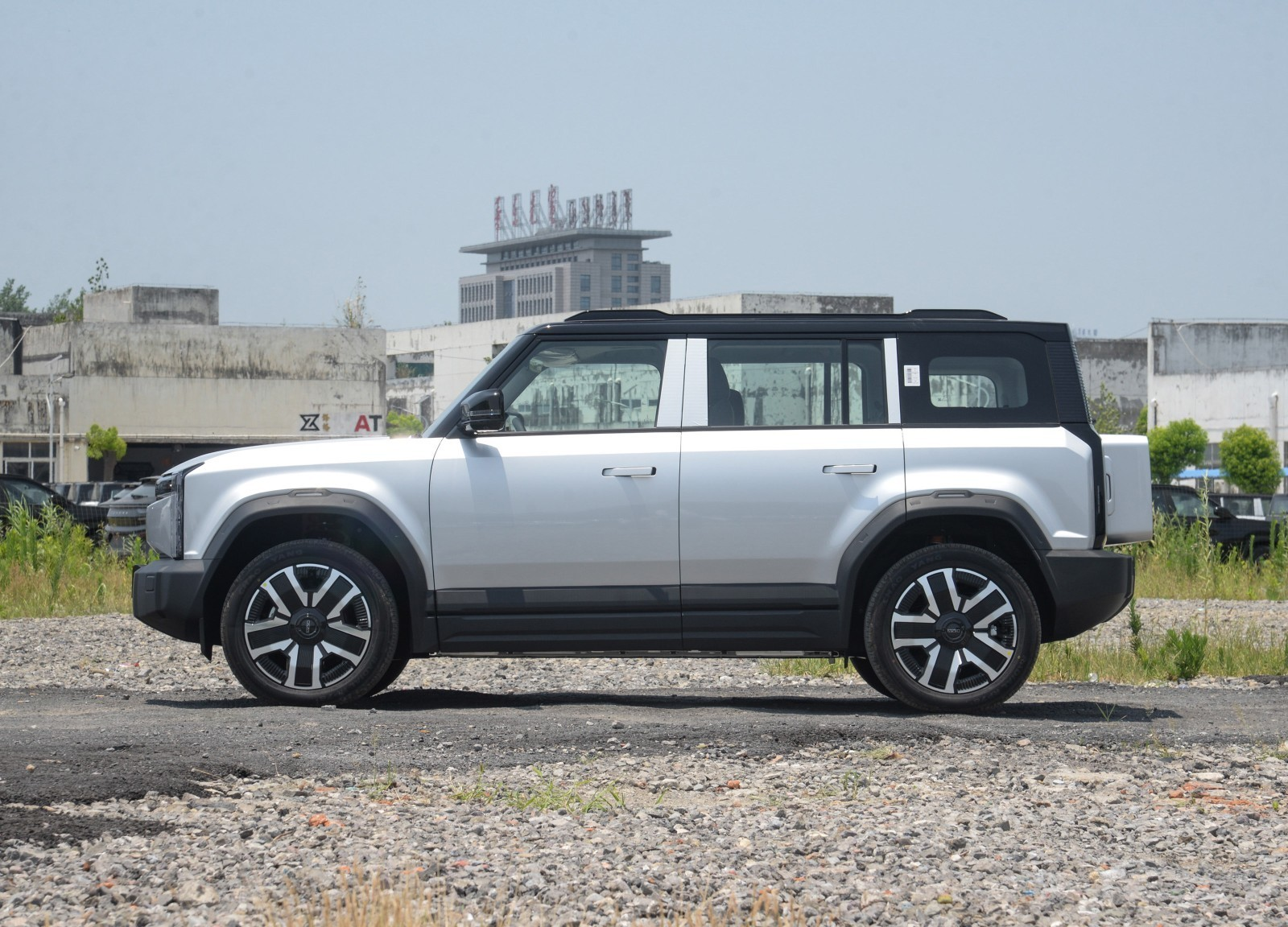
The rear of the vehicle features three-dimensional vertical tail lights and a side-opening tailgate. A storage box attached to the tailgate, designed to look like a spare tire, adds to the robust impression. This interstellar mecha style is aimed squarely at young consumers who seek individuality and an outdoor lifestyle.
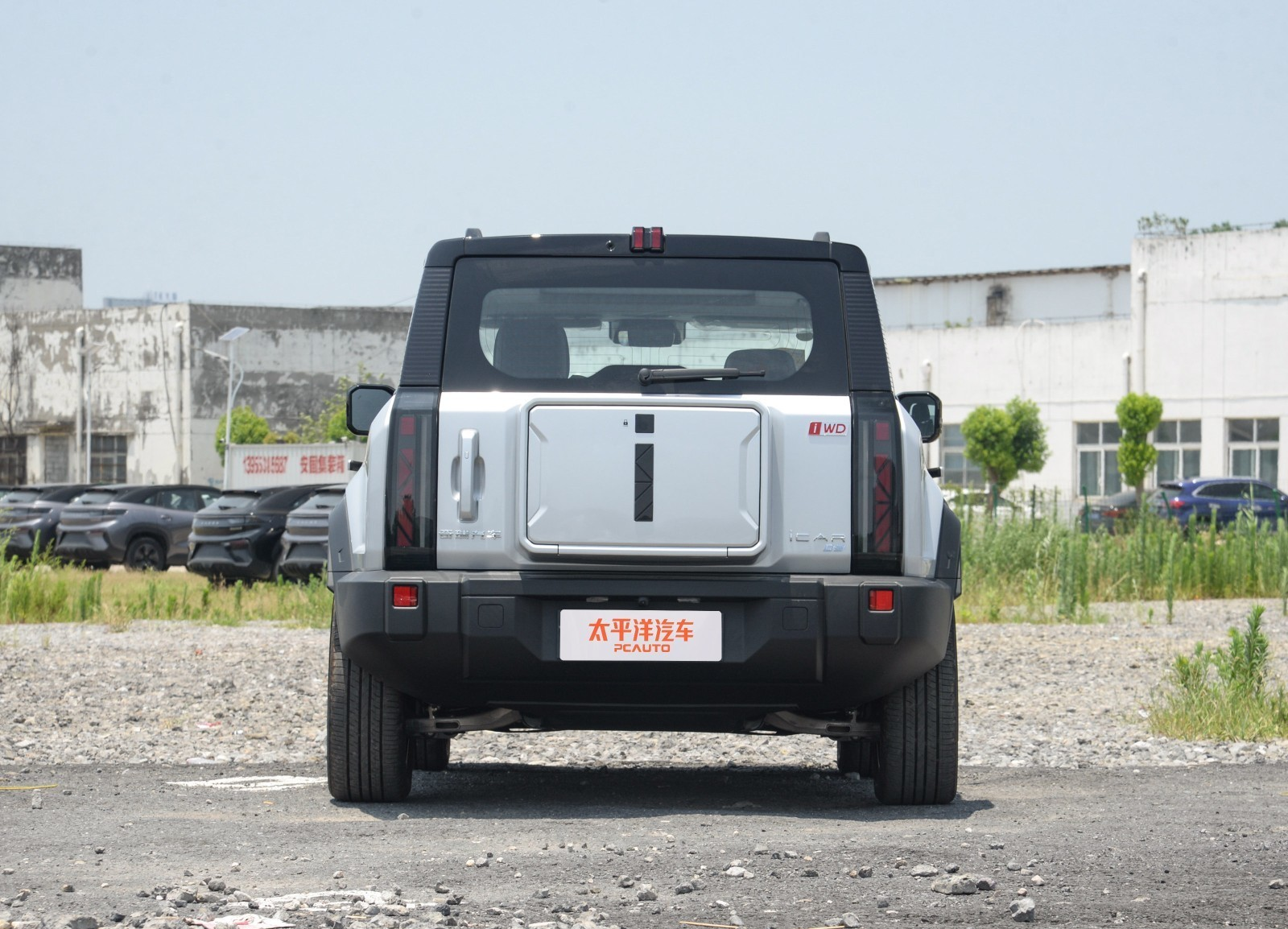
While the boxy design of the iCaur 03 does incur significant aerodynamic drag, which can impact its driving range, this is far less of a concern for those who primarily drive in the city. After all, the iCaur 03 is such a head-turner that you'll be more than willing to overlook this minor trade-off.
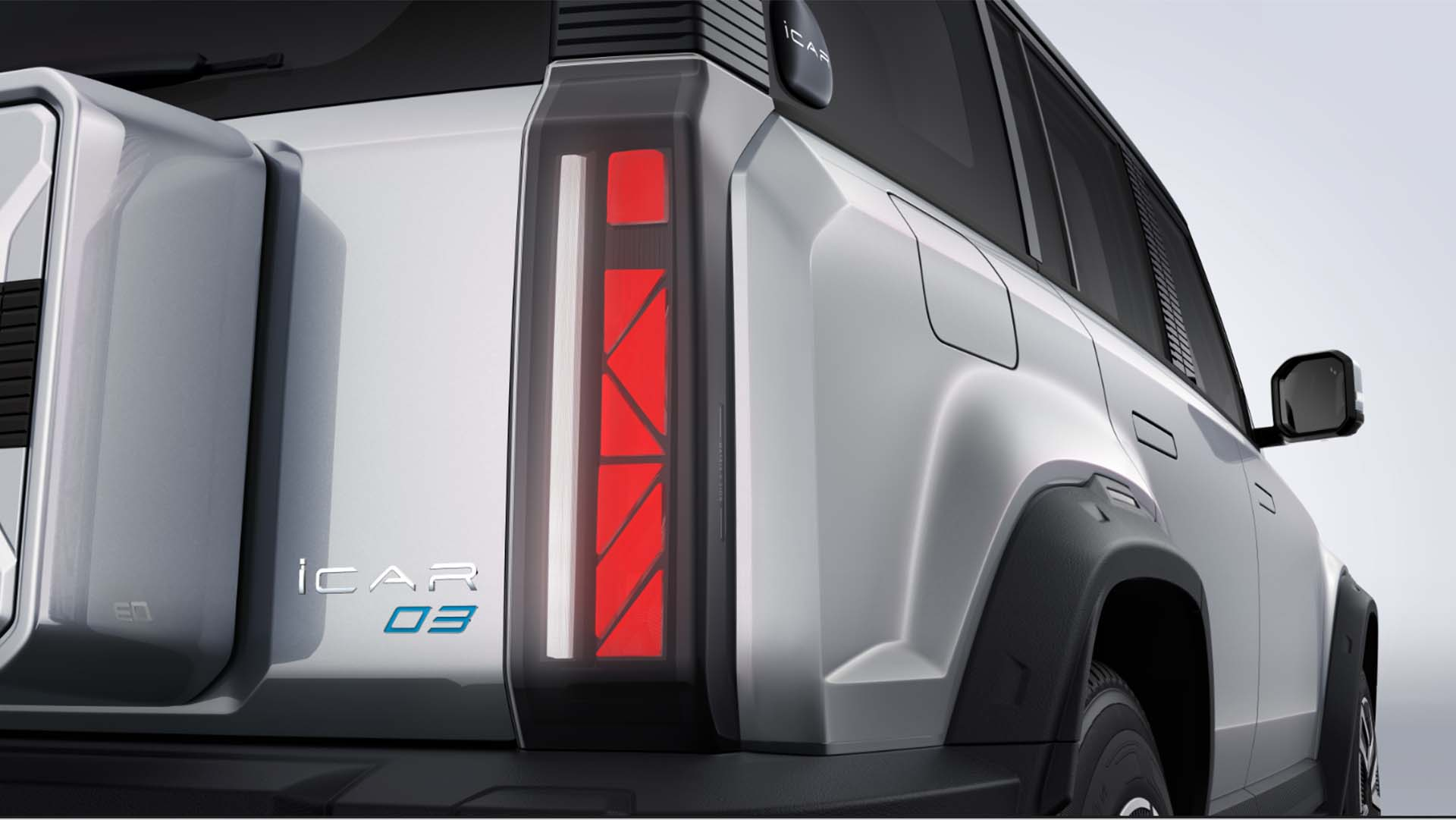
In contrast, the BYD Atto 3 adheres to the brand's "Dragon Face 3.0" design language. It features a closed grille and a streamlined body that collectively project a sophisticated urban aesthetic.
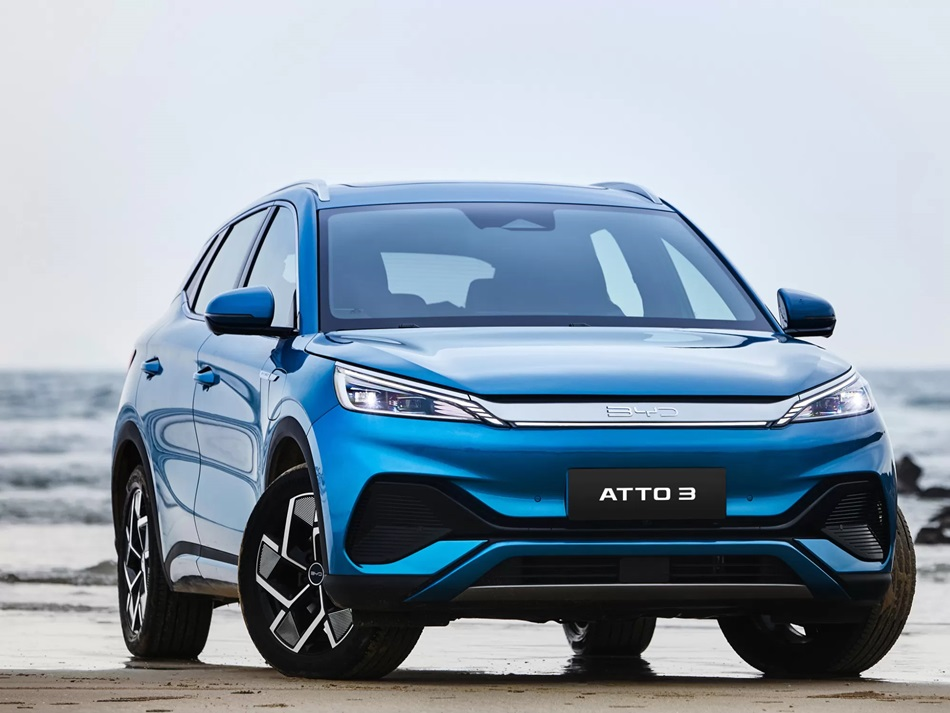
The front end features dragon-claw style LED headlights and a full-width matte trim that together create a refined appearance. Along the sides, a dynamic waistline and flush-mounted door handles highlight the aerodynamic design, while the full-width dragon-claw taillights at the rear maintain a consistent family identity.
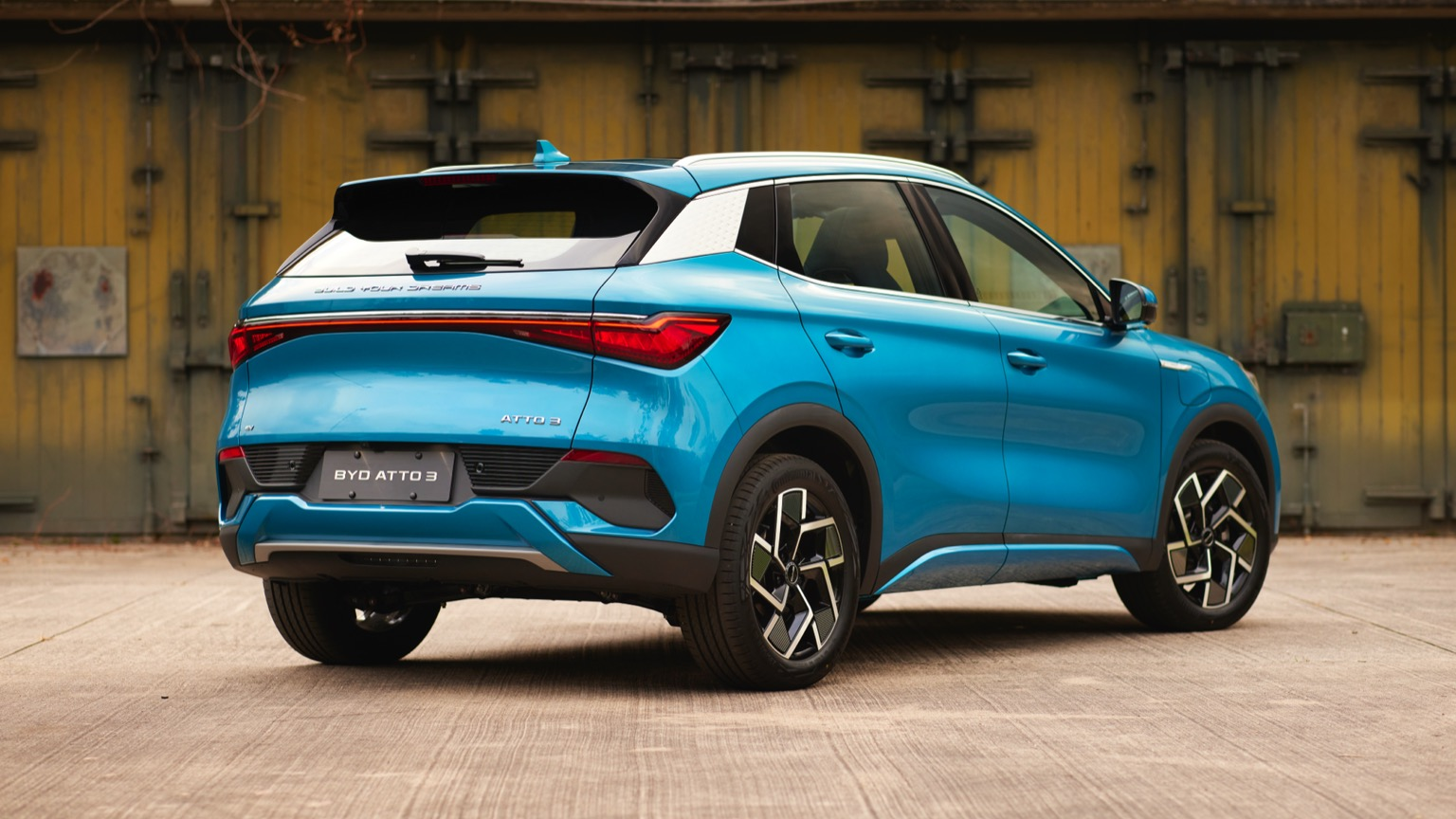
The overall design is mature and well-coordinated, which appeals to mainstream aesthetics and is better suited for users who value brand identity and urban refinement.
A Comparison of Interior: iCaur 03 vs. Atto 3
Inside, the iCaur 03 adopts a rugged, tech-focused theme. Straight lines and rectangular elements echo its exterior styling. The cabin materials primarily include hard plastics and synthetic leather, accented with aluminum trim to evoke an industrial feel. Higher-spec models further enhance the premium touch with genuine leather stitching.
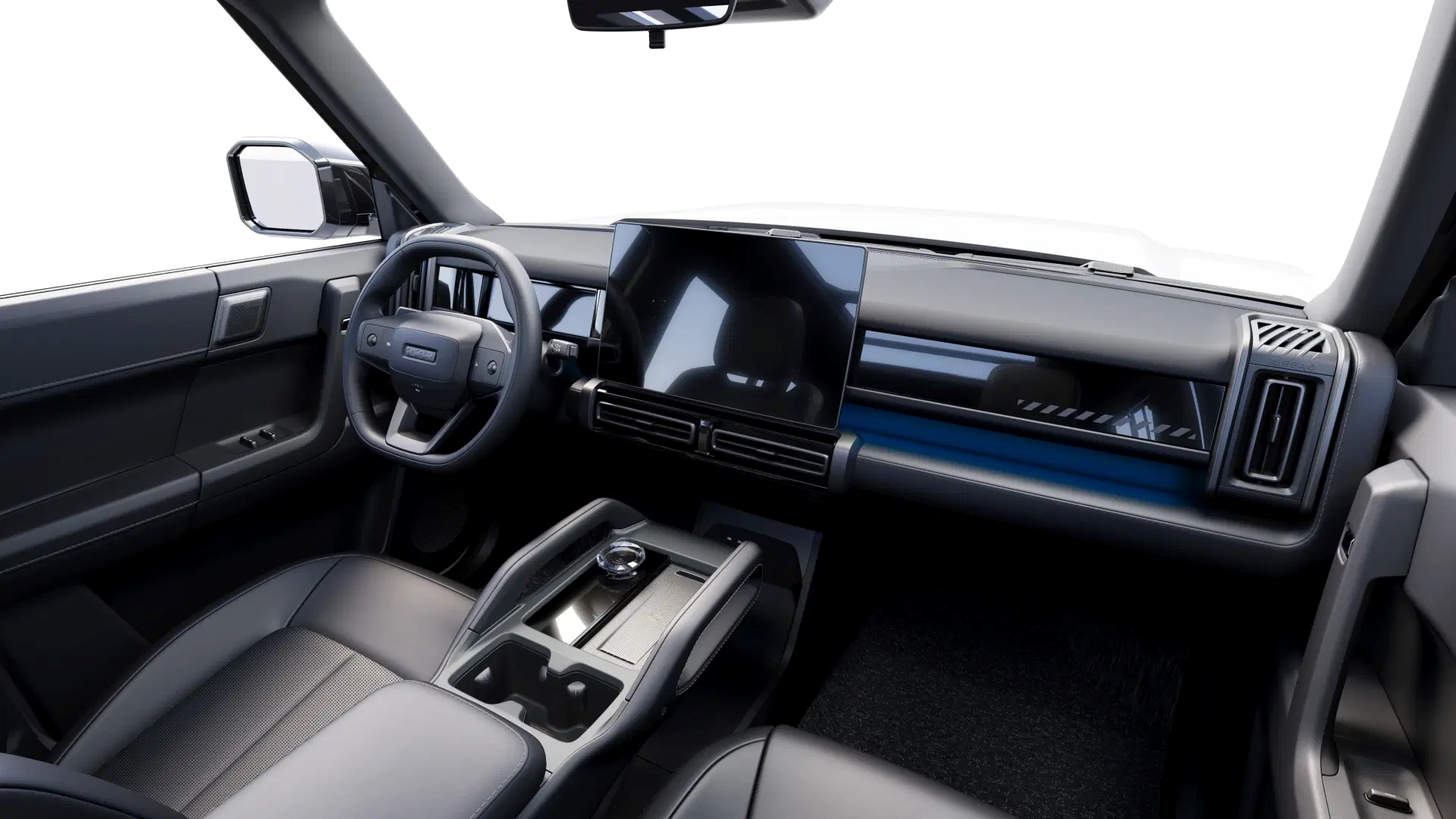
The iCaur 03 comes with a fixed 15.6-inch Full HD infotainment touchscreen, which is equipped with the Sound Plus multimedia system. It supports both Android Auto and Apple CarPlay, thereby compensating for the limitations of its native in-car ecosystem.
The iWD version features a 12-speaker Infinity audio system. This, along with the panoramic glass roof and multi-color ambient lighting, fosters a distinct sense of technology inside the vehicle.
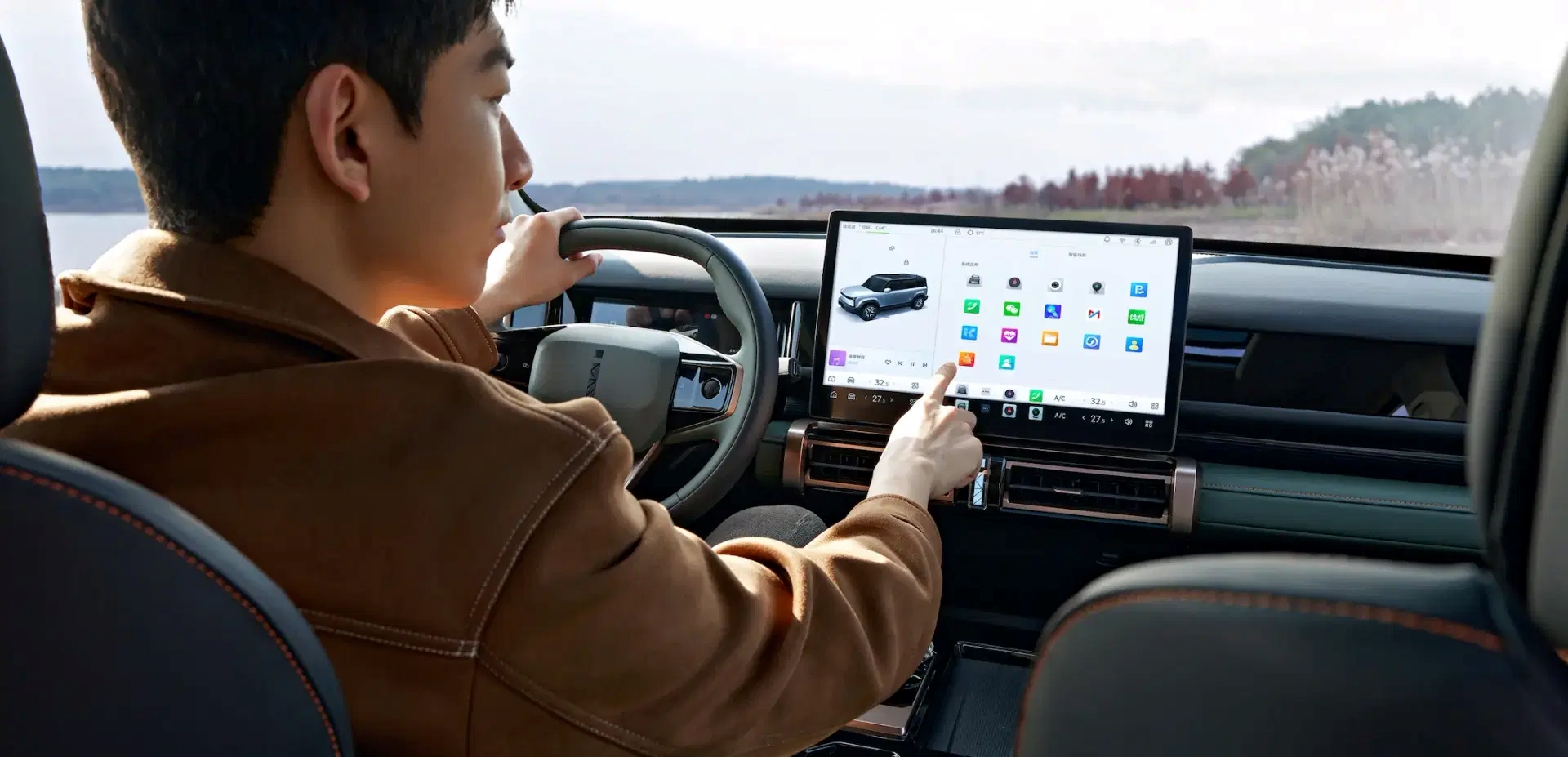
The BYD Atto 3's cabin embraces a refined yet vibrant aesthetic. It incorporates flowing curves and an asymmetrical center console design, complemented by soft-touch surfaces, leather upholstery, and metallic accents, all tied together with a youthful color scheme.
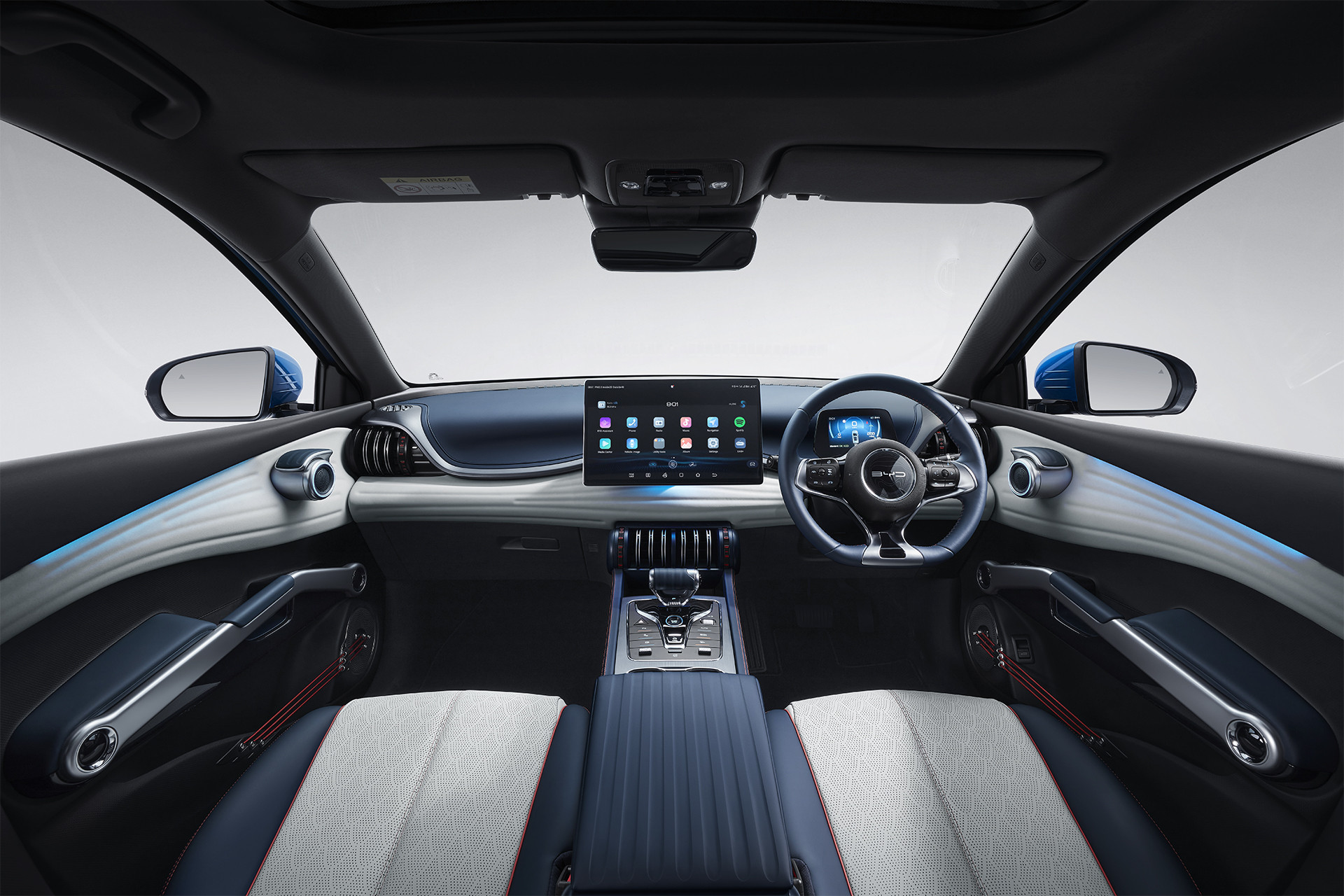
The BYD Atto 3 Ultra features a 15.6-inch screen. Its standout capability is a 90-degree rotation function that adapts to various user preferences, and it supports 1080P resolution with touch control.
The vehicle's infotainment system supports voice control, enabling the integrated operation of hardware features such as the air conditioning and windows. Through a dedicated smartphone app, users can also remotely activate the vehicle, adjust the air conditioning, and check its status.
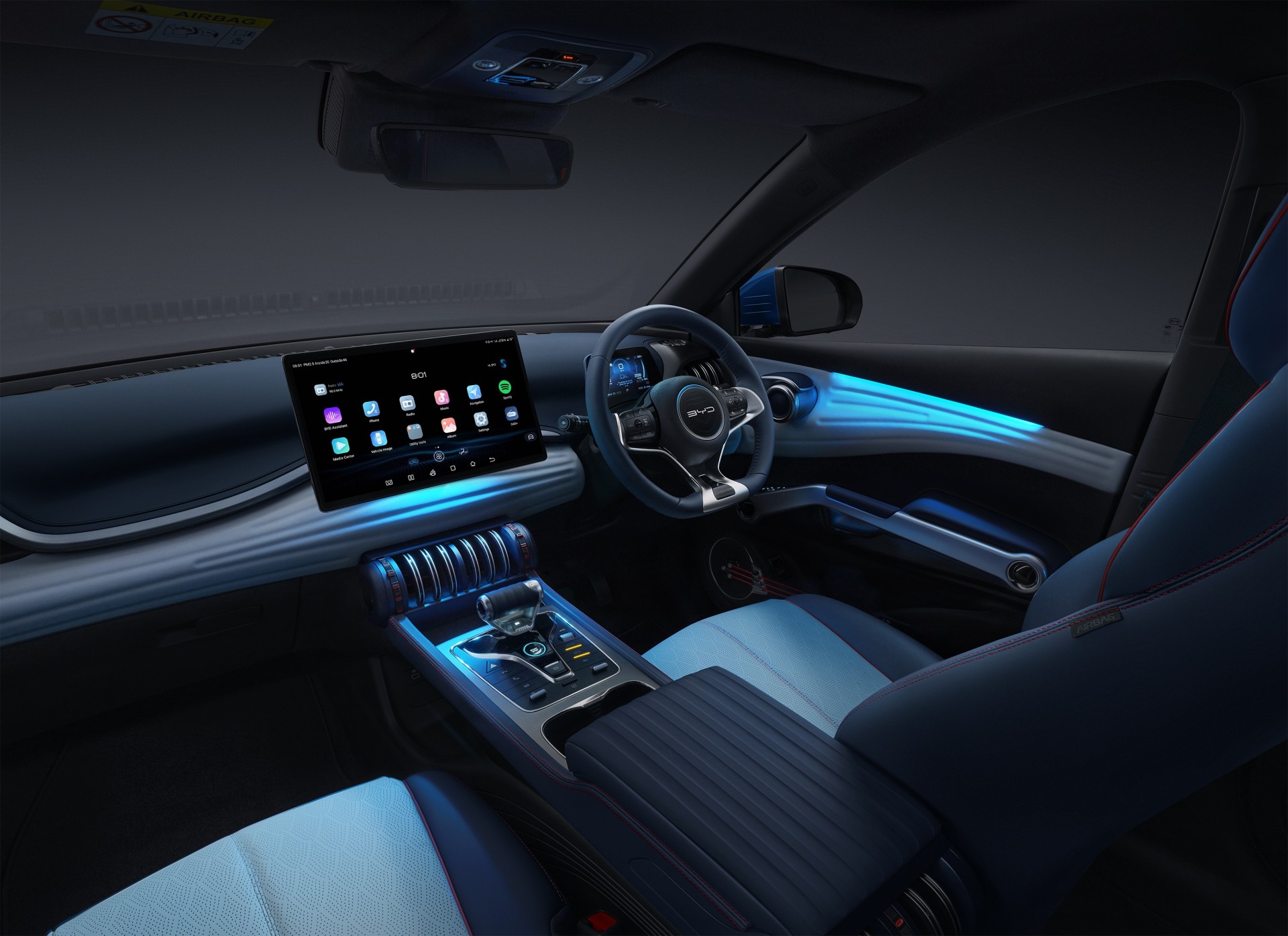
In terms of seat configuration, the cushioning of the BYD Atto 3 is soft and springy with good wrapping support. The multi-way electric adjustment and heating function of the driver's seat enhance comfort. The iCaur 03 seats are relatively firm with strong support, but features like ventilation are only available on the top trim. Additionally, the BYD Atto 3 comes standard with a PM2.5 filter and air purification system, and both models include basic comfort features such as automatic air conditioning and rear air vents.
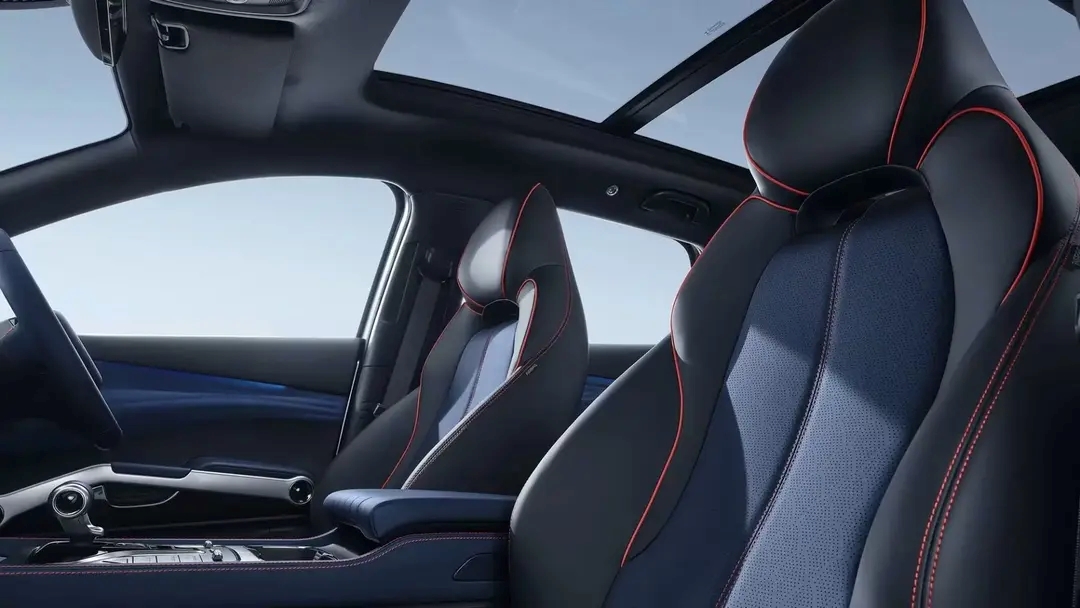
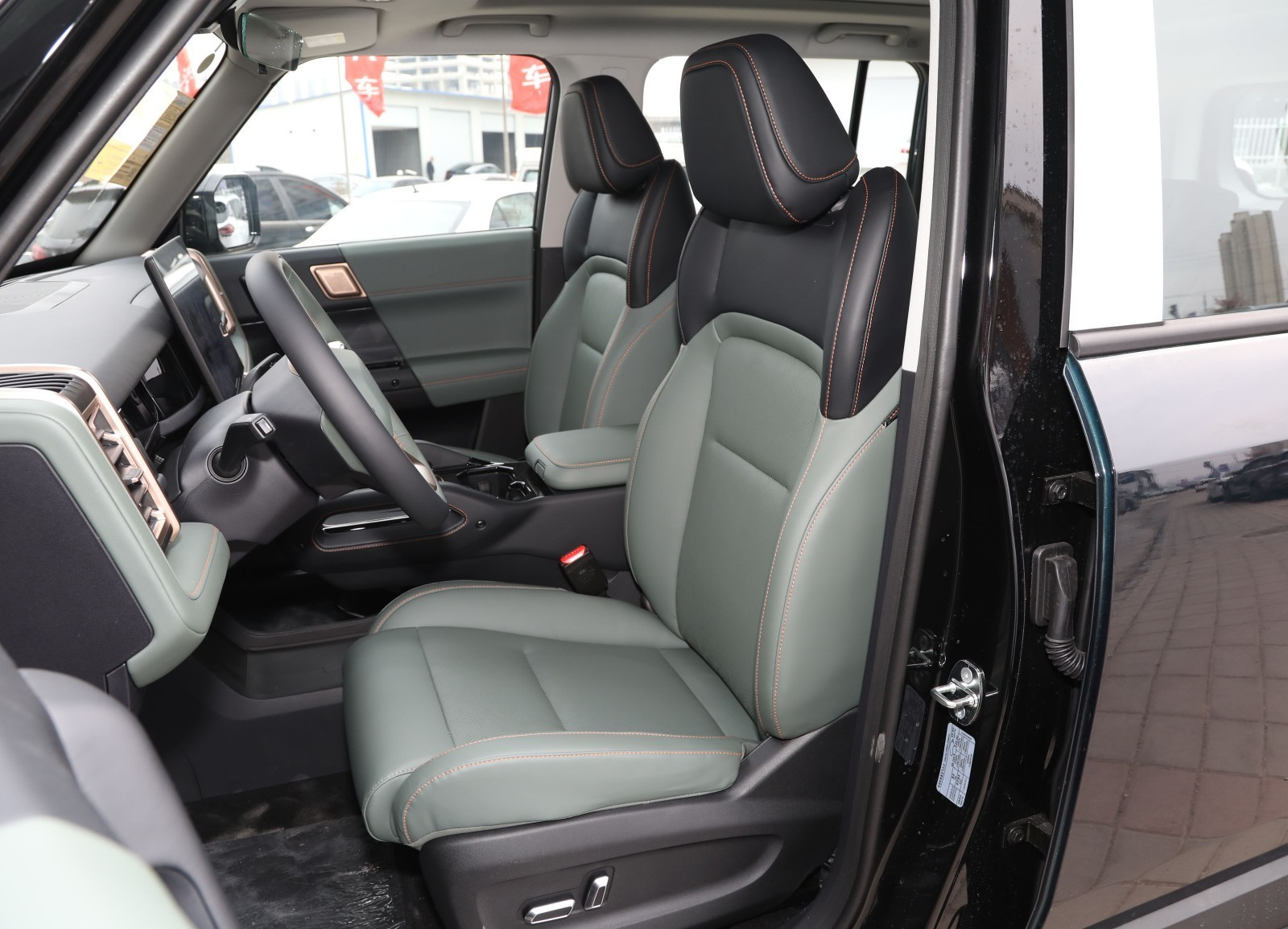
In terms of cabin space, the BYD Atto 3 benefits from a 2720mm wheelbase (versus the iCaur 03's 2715mm), which results in slightly superior rear legroom and makes it particularly well-suited for passengers taller than 180cm.
The iCaur 03, on the other hand, provides greater shoulder room due to its wider 1910mm body (compared to the Atto 3's 1875mm). Its more upright, box-like silhouette also contributes to increased headroom.
For cargo utility, the BYD Atto 3 has a standard trunk volume of 440L. This can be expanded to 1330L by folding the rear seats, and it features a very flat load floor. The iCaur 03 offers a trunk volume of 450L to 1238L; its squarer design is advantageous when transporting larger, bulkier items.
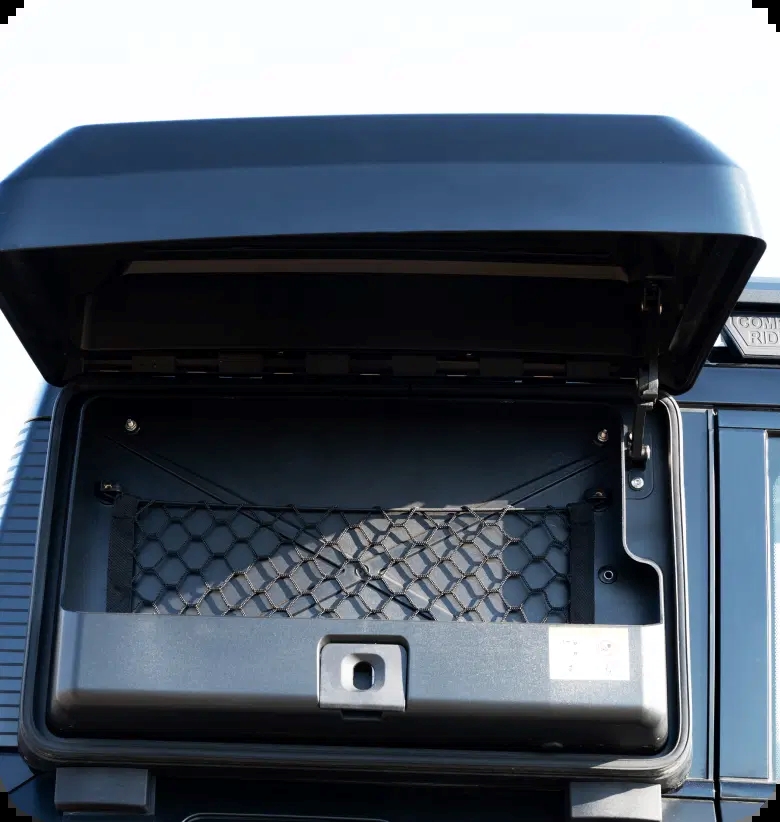
A Comparison of Active Safety Features: iCaur 03 vs. BYD Atto 3
In the domain of intelligent driving, the BYD Atto 3 is outfitted with an L2-level ADAS (Advanced Driver-Assistance System). The suite encompasses full-speed adaptive cruise control, lane centering assist, autonomous emergency braking, and traffic sign recognition. The system is highly refined, making it particularly suitable for highway and urban expressway scenarios.
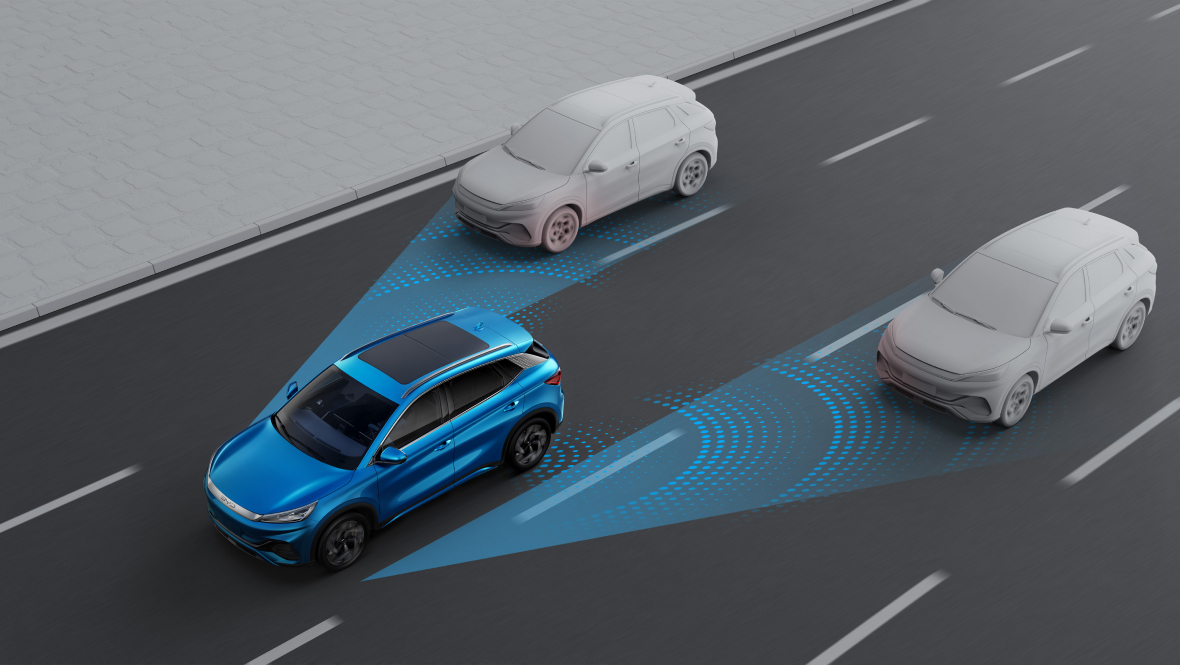
The iCaur 03 is also equipped with ADAS, covering blind spot monitoring, lane departure warning, and adaptive cruise control features. Additionally, the iCaur 03 comes with a unique 540° transparent chassis system (standard on iWD version) that enhances parking convenience, which is likely to be favored by novice drivers.
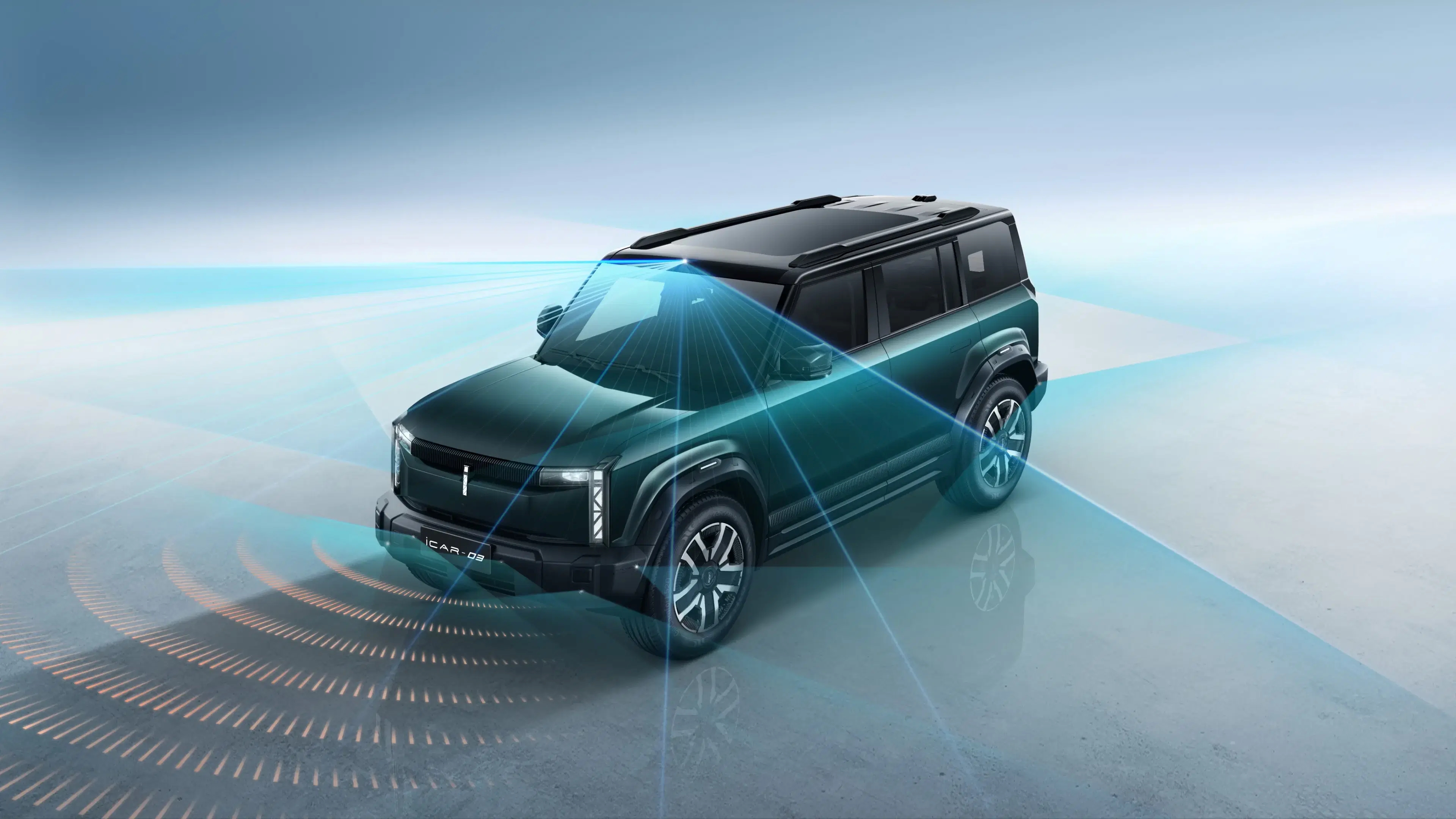
Powertrain Comparison: iCaur 03 vs. BYD Atto 3
The powertrain represents the most significant difference between these two models. The BYD Atto 3 Ultra features a 150kW electric motor that generates a peak torque of 310 N·m, resulting in a 0-100 km/h acceleration time of 7.3 seconds.
It is equipped with a 60.48 kWh lithium iron phosphate (LFP) battery, offering an NEDC range of 480 km. The vehicle supports 88 kW DC fast charging, which can replenish the battery from 10% to 80% in about 40 minutes.
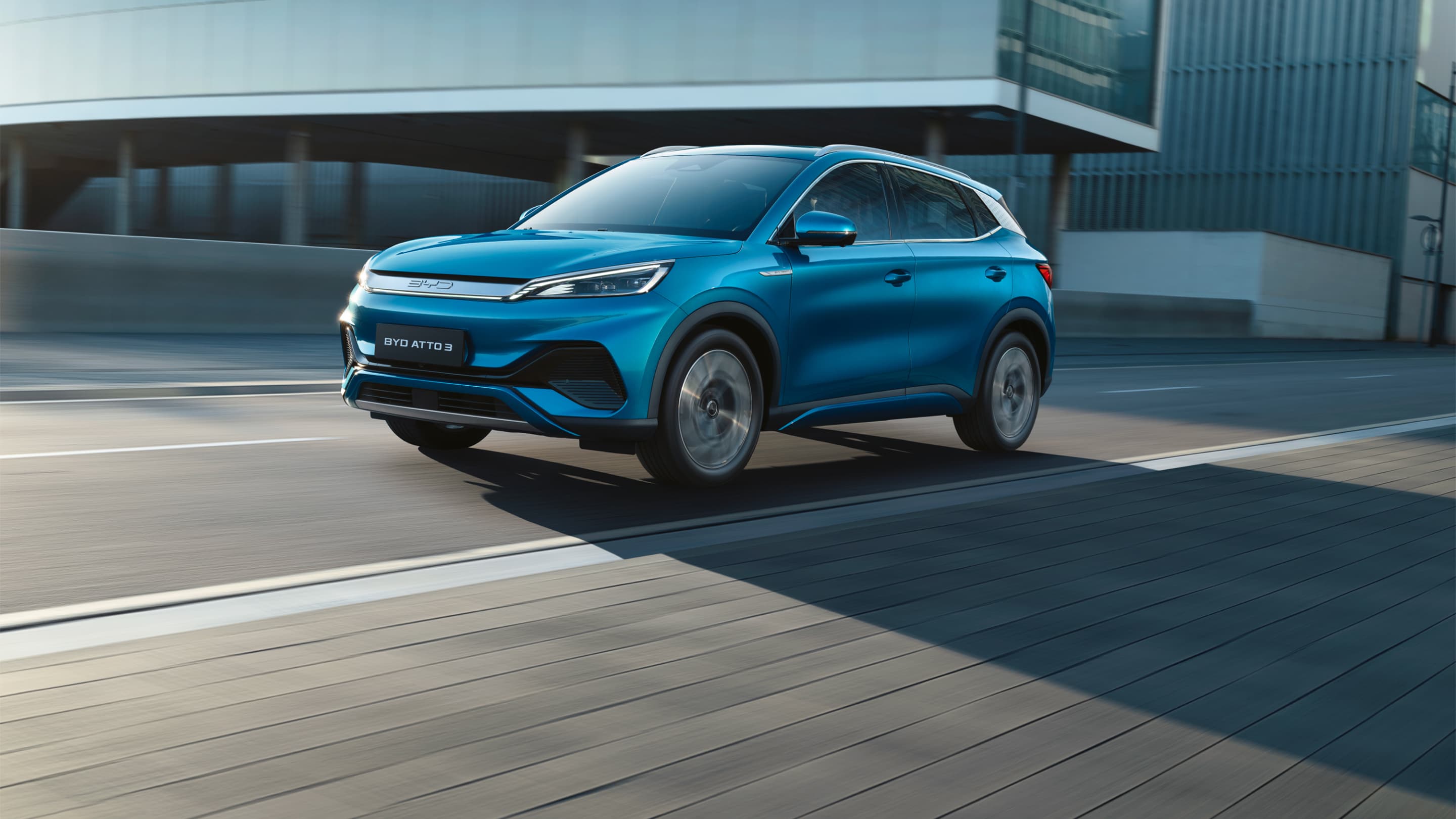
iCaur 03 offers two versions: 2WD and iWD.
The 2WD model has a motor power of 137kW, accelerates from 0-100km/h in 10.5 seconds, uses a 65.7kWh lithium iron phosphate battery, and has a range of 426km (NEDC).
The iWD version is equipped with dual motors, delivering a combined power of 208kW, a peak torque of 385N·m, and accelerates from 0-100km/h in 6.5 seconds. Although the lithium iron phosphate battery capacity has slightly increased to 69.8kWh, the range drops to 418km (NEDC) due to higher energy consumption.
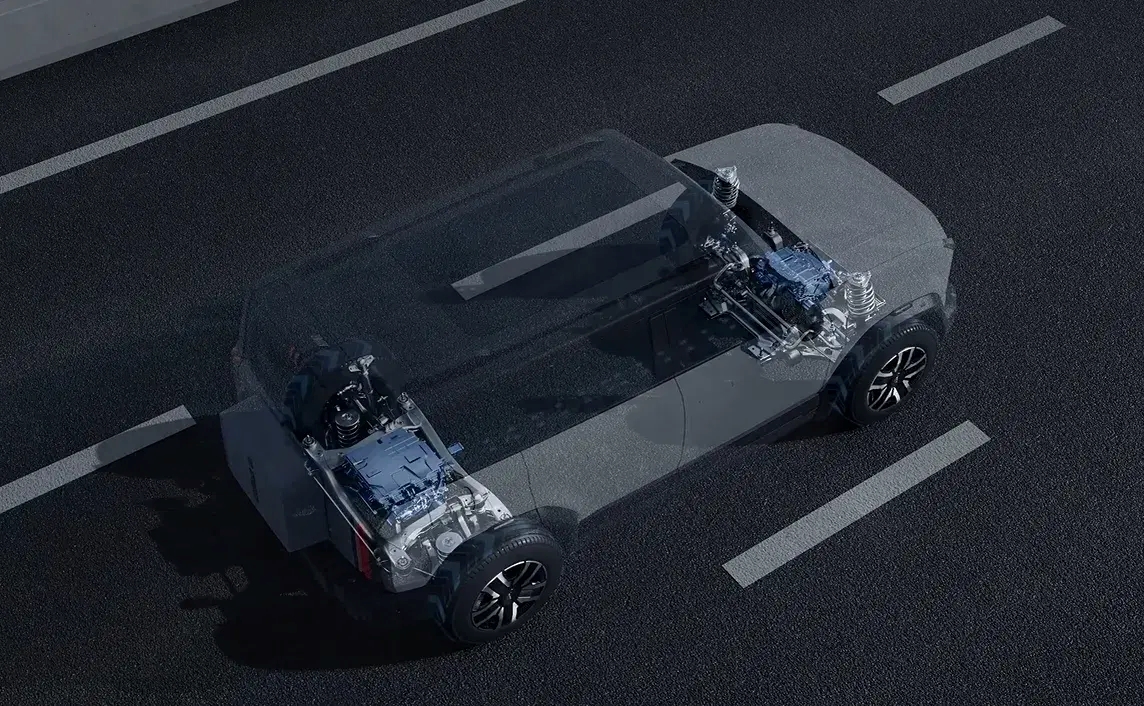
The entire iCaur 03 series supports 80kW DC fast charging, which can replenish the battery from 30% to 80% in approximately 30 minutes, and features a standard 3.2kW V2L (Vehicle-to-Load) external discharge function.
The iWD version is additionally equipped with multi-terrain off-road modes (e.g., for sand, mud, and snow). Together with a ground clearance of 195 mm, this gives the vehicle certain light off-road capabilities.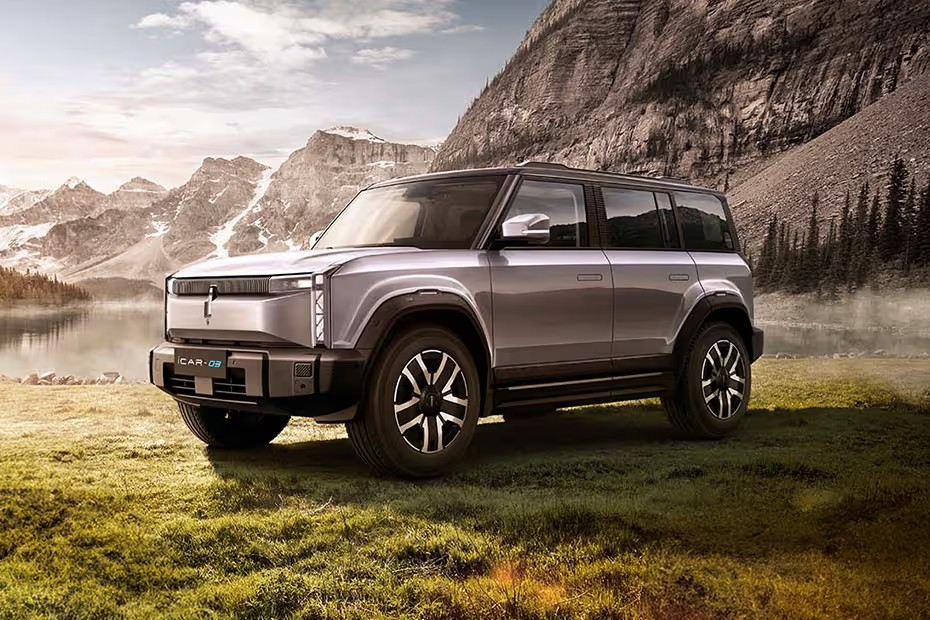 In terms of driving range, the BYD Atto 3 outperforms the iCaur 03. However, the iCaur 03's four-wheel-drive system represents a key advantage that the Atto 3 lacks. Even in their two-wheel-drive configurations, the iCaur 03's rear-wheel-drive layout is perceived by some drivers as providing a more engaging and fun-to-drive experience compared to the Atto 3.
In terms of driving range, the BYD Atto 3 outperforms the iCaur 03. However, the iCaur 03's four-wheel-drive system represents a key advantage that the Atto 3 lacks. Even in their two-wheel-drive configurations, the iCaur 03's rear-wheel-drive layout is perceived by some drivers as providing a more engaging and fun-to-drive experience compared to the Atto 3.
Driving Dynamics
The driving characteristics of the two models are also distinctly different.
For city driving, the BYD Atto 3 is tuned primarily for comfort. Its front MacPherson strut and rear multi-link suspension effectively smooth out road imperfections. The steering is light and accurate, and its excellent NVH (Noise, Vibration, Harshness) refinement makes it well-suited for long-distance commuting and congested urban traffic.
The iCaur 03 has a firmer suspension setup, which provides clearer road feedback and better resistance to body roll when cornering. However, its NVH control is slightly inferior to the Atto 3's. This results in a more direct and communicative driving experience, catering to users who prefer sportier handling.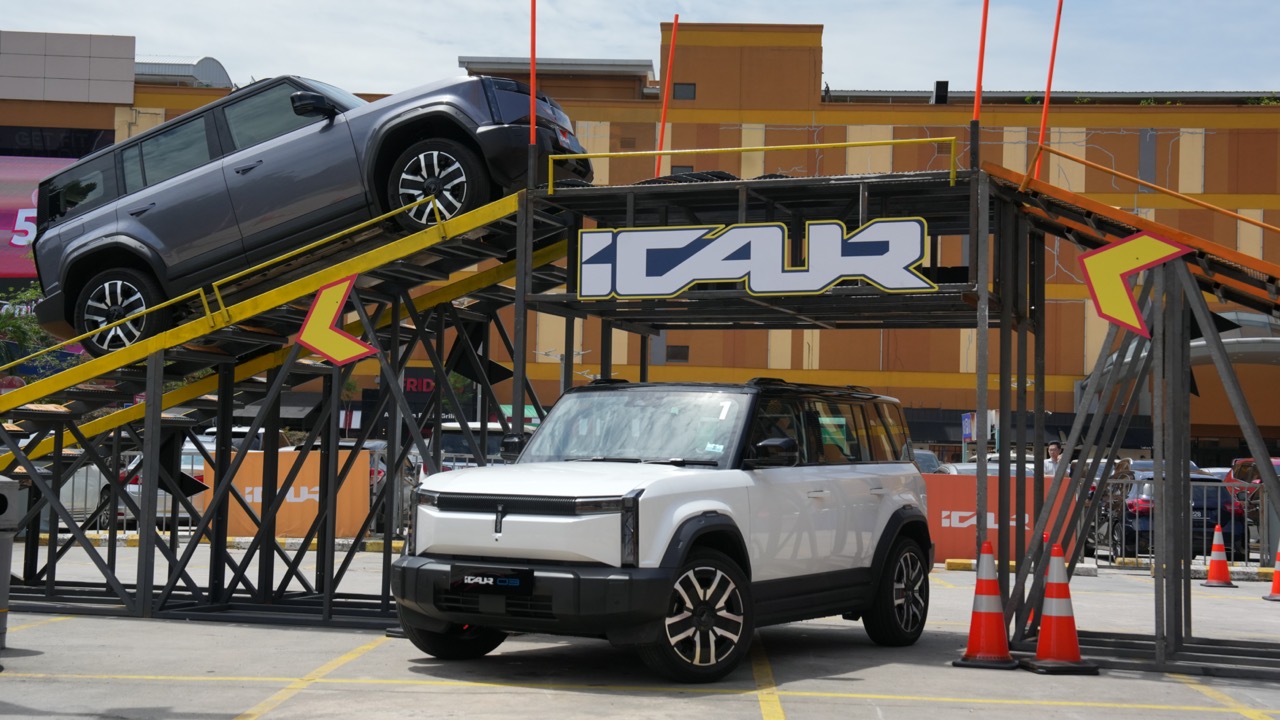
Regarding adaptability to unpaved roads, the BYD Atto 3, as a front-wheel-drive urban SUV, has limited ground clearance (about 150-160mm) and can only handle simple dirt roads.
The iCaur 03's iWD version, with its electric four-wheel-drive torque distribution, multi-terrain modes, and higher ground clearance (170-195mm), has light off-road capabilities, extending its usability to scenarios like sand and mud.
In summary, in terms of driving experience, the BYD Atto 3 emphasizes comfort and relaxation, while the iCaur 03 focuses more on driving enjoyment and exploration potential.
Purchase recommendation for Atto 3 and iCaur 03
The BYD Atto 3's core strengths lie in its ample range, comfortable space, advanced L2 driver-assistance features, and refined cabin experience, making it suitable for users prioritizing family outings, city commuting, and cost-effectiveness.
The iCaur 03, with its futuristic boxy design and intelligent all-wheel-drive system, is more suited for consumers seeking individuality, driving enjoyment, and light off-road capabilities. Of course, if you are particularly fond of the iCaur 03's appearance, you can confidently choose it as it is also a reliable and well-rounded electric SUV.
If any infringement occurs, please contact us for deletion
Trending News

BYD Sealion 7 is not only cheaper than Tesla Model Y, what other differences do they have?
Is it better to buy the BYD Sealion 7 or the Tesla Model Y? This really makes one a bit hesitant, but before you make a decision, I recommend you take a good look at this article.

Toyota Land Cruiser FJ did not disappoint, the most anticipated civilian off-road vehicle is back.
Since its birth in 1951 under the name Toyota BJ, the Land Cruiser series has accumulated sales of approximately 12.15 million units in over 190 countries and regions worldwide, becoming a global off-road icon spanning more than 70 years.

2026 Toyota Hilux Travo released, the brand-new exterior and interior are highly anticipated
If you're considering buying a Hilux, honestly, the comprehensive innovations in the ninth generation are worth waiting for. While the current model might still have some advantages in terms of reliability and price, the new model offers significant changes in terms of exterior and interior luxury, tech features, and powertrain options.

In Malaysia, which sliding door MPVs are available?
The numerous advantages of sliding door MPVs make many people fond of this type of vehicle. However, MPVs are not a mainstream choice in the car market, so many people might not know which MPVs are available domestically.

Suzuki Fronx vs. Toyota Yaris Cross comparison, which one is more worth buying?
Compact SUVs are increasingly favored by consumers for their flexibility and fuel efficiency. Consequently, the Suzuki Fronx has also entered this market segment, attracting significant attention.
Popular Cars
Car Compare

